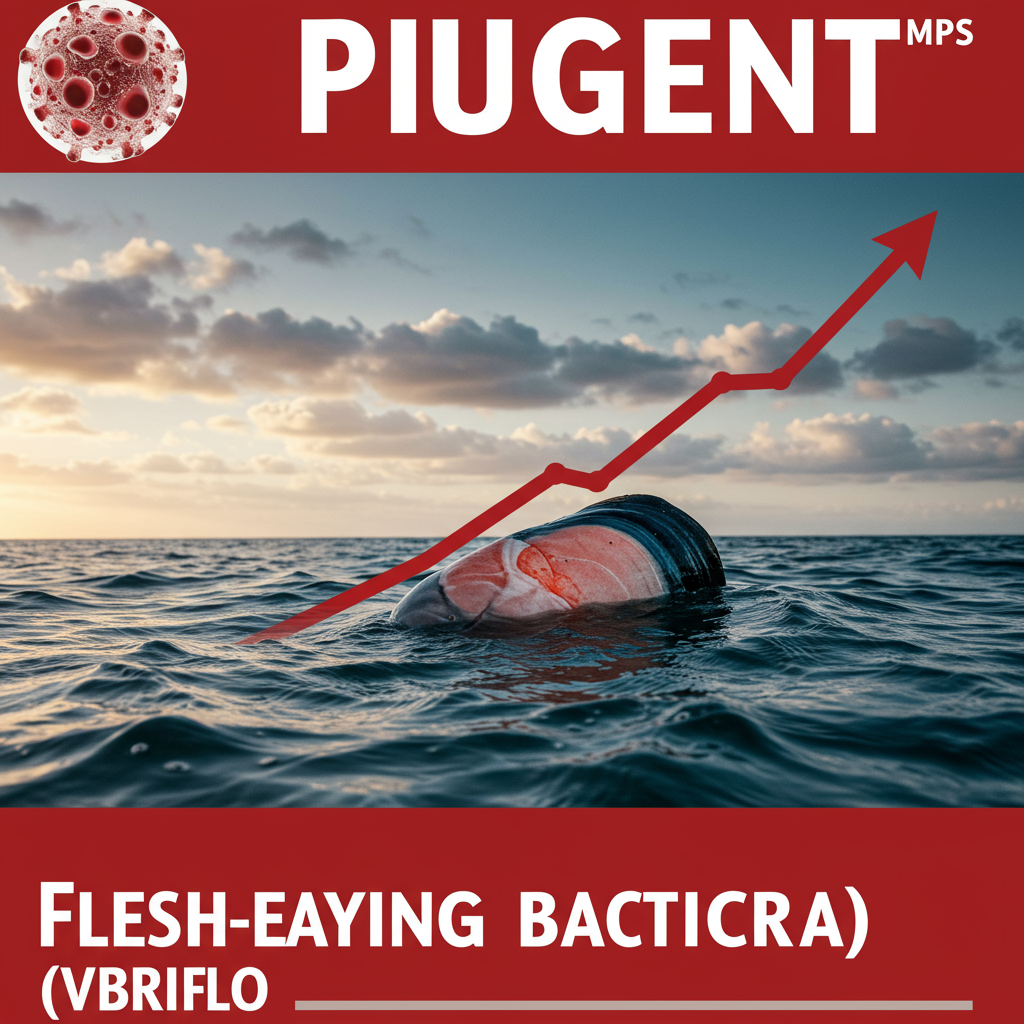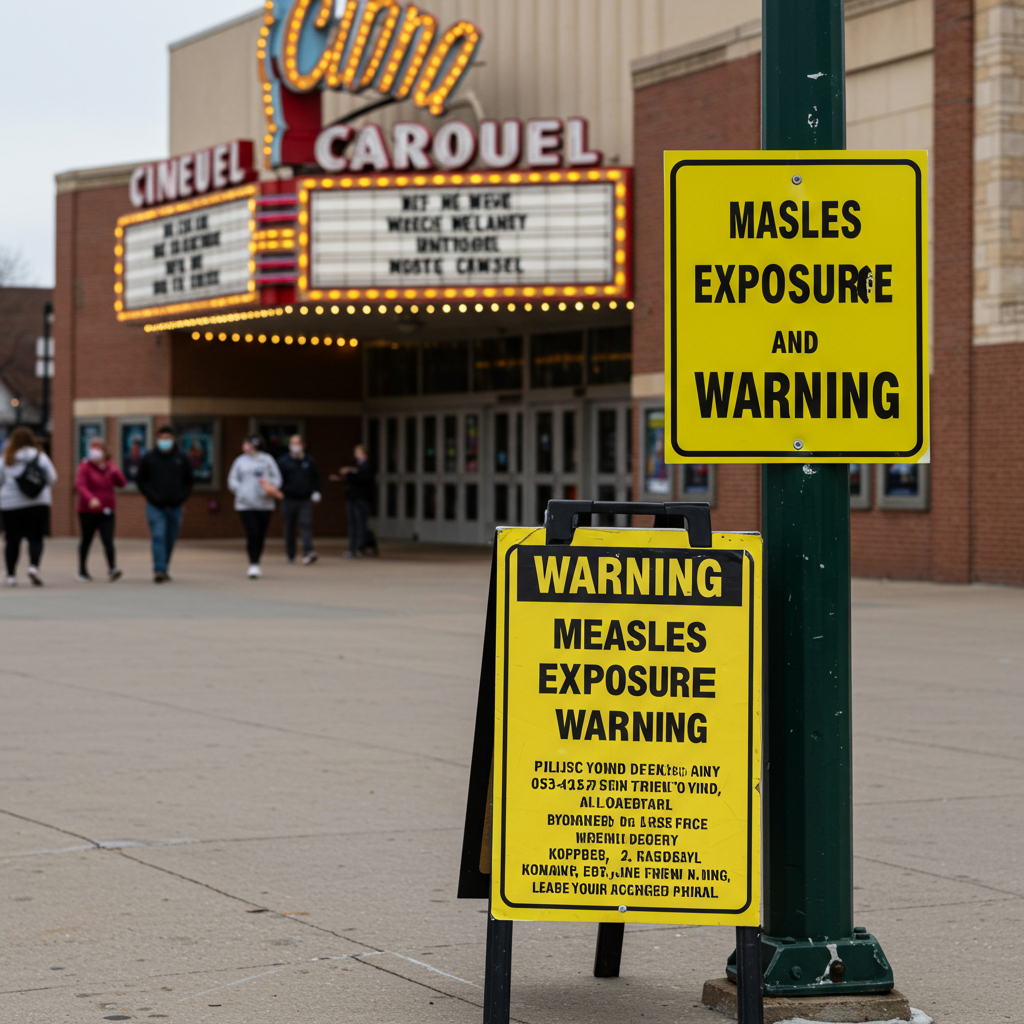A deadly bacterial infection, Vibrio vulnificus, is causing an alarming surge in fatalities and illnesses across the U.S. Officials are issuing urgent warnings as cases of this often-misunderstood “flesh-eating bacteria” double in some regions. Understanding the risks and essential prevention steps is crucial for public safety, especially for those who enjoy coastal activities or raw seafood.
What is Vibrio vulnificus? Understanding the Threat
Vibrio vulnificus is a naturally occurring bacterium found in warm coastal and brackish waters. It thrives particularly between May and October, when water temperatures are higher. While commonly referred to as “flesh-eating bacteria,” it’s important to clarify that the bacterium doesn’t decompose healthy, intact skin. Instead, it causes a severe infection that can lead to necrotizing fasciitis, a condition where the infection rapidly destroys skin and underlying tissue. About one in five infected individuals succumb to the illness, sometimes within just a day or two.
An Unprecedented Surge: Cases Explode Across the U.S.
The United States is currently experiencing a disturbing increase in Vibrio vulnificus infections. Louisiana, a state typically reporting an average of seven cases and one death annually over the past decade, has already seen 26 infections and five fatalities this year, more than double the number reported in 2024. This troubling trend extends far beyond the Gulf Coast.
Across the Gulf region, other states are also grappling with rising numbers:
Alabama has reported 10 cases, including one death.
Mississippi has seen three cases, one of which was fatal.
Florida has logged 13 cases this year, resulting in eight deaths. The Sunshine State recorded 45 cases and 14 deaths last year, indicating a persistent threat.
Alarmingly, the bacteria’s geographical reach is expanding northward. Cases have been documented as far north as Massachusetts, leading to oyster bed closures. New York and Connecticut have also reported fatalities. New York’s Suffolk County saw one death, while Connecticut has reported three hospitalized cases and two deaths since July 1, affecting individuals aged 60 to 80. Notably, two of Connecticut’s cases were wound infections, not linked to seafood, underscoring varied exposure risks. This marks Connecticut’s first Vibrio case in three years, prompting state health officials to issue new public guidance.
Overall, the Centers for Disease Control and Prevention (CDC) estimates Vibrio vulnificus causes approximately 80,000 illnesses and 100 deaths annually in the U.S., with about 52,000 cases stemming from contaminated food.
The Troubling Trend: Why Are Infections Increasing?
Experts point to global warming as a significant driver behind the escalating number and expanding geographical range of Vibrio vulnificus infections. Infectious disease specialists note that warming ocean temperatures are causing the bacteria to move further up the East Coast.
Specific environmental conditions also play a role. In Florida, for instance, warm, stagnant inshore waters, particularly when salt levels drop below 2.5% (as observed in the Indian River Lagoon), create ideal breeding grounds. Heavy rains and large freshwater releases can exacerbate this issue by pushing the pathogen beyond its typical range, raising public health concerns.
How Do People Get Infected? Understanding Transmission Risks
There are two primary ways individuals contract a Vibrio vulnificus infection, both carrying serious risks.
Wound Exposure to Contaminated Water
The most common route of infection involves open wounds coming into contact with contaminated brackish or salt water. This includes cuts, scrapes, recent piercings, and even tattoos. In Louisiana this year, a significant 85 percent of infected individuals reported exposure through wounds and seawater. The bacteria can enter the bloodstream directly through these openings, leading to rapid and severe infection.
Eating Contaminated Raw or Undercooked Seafood
The second major pathway is through the consumption of raw or undercooked seafood, especially oysters. Officials confirmed that two of this year’s deaths in Louisiana were directly linked to raw oyster consumption. This method of infection is considered particularly dangerous, with about half of Vibrio vulnificus infections proving deadly when individuals with pre-existing health conditions consume contaminated raw oysters or other seafood. Tragically, a 54-year-old Missouri man died in June after eating contaminated raw oysters, and Florida reported two deaths last year from raw oysters sourced from Louisiana.
Consumer advocacy groups, like the Center for Science in the Public Interest (CSPI) and Public Citizen, have even filed a lawsuit against the U.S. Food and Drug Administration (FDA). They advocate for mandatory low-heat pasteurization or similar bacteria-killing techniques for raw shellfish to enhance safety without compromising taste. These groups estimate that without such safety standards, approximately 30 people will fall seriously ill, and 15 will die annually from consuming contaminated raw shellfish.
Recognizing Symptoms and Identifying Vulnerable Groups
Symptoms of Vibrio vulnificus infection can vary from mild to life-threatening, progressing rapidly.
Mild Cases may present with:
Watery diarrhea
Abdominal cramping
Nausea and vomiting
Fever
Severe Cases can quickly escalate to:
Bloodstream infections (sepsis)
Dangerously low blood pressure
Necrotizing fasciitis, which aggressively destroys skin and tissue.
In extreme instances, doctors may need to amputate limbs to remove dead or infected tissue and halt the bacteria’s progression.
While anyone can be affected, certain individuals face a significantly higher risk of developing life-threatening complications. These vulnerable populations include:
People with liver disease (including from alcoholism)
Individuals with cancer
Those with weakened immune systems
People taking medications that decrease stomach acid levels
Essential Precautions to Protect Yourself and Loved Ones
Health officials strongly urge the public to take proactive steps to prevent Vibrio vulnificus infection. Vigilance and adherence to safety guidelines are paramount.
Prudent Wound Care
Avoid water exposure: If you have an open wound, cut, scrape, recent piercing, or tattoo, stay out of brackish or salt water.
Cover wounds: If contact with water, raw seafood, or raw seafood juices is unavoidable, cover your wound with a clean, waterproof bandage.
Immediate washing: Should a wound come into contact with saltwater or raw seafood/juices, wash it thoroughly with soap and water immediately.
Safe Seafood Handling and Consumption
Avoid raw shellfish: Immune-compromised individuals, pregnant women, young children, and the elderly should strictly avoid raw oysters and other raw shellfish.
Cook thoroughly: Always cook all shellfish completely before eating.
Prevent cross-contamination: Keep raw seafood separate from cooked seafood and other foods to prevent bacterial transfer.
Wear gloves: Use protective gloves when handling raw shellfish.
Wash hands: Thoroughly wash your hands with soap and water after handling any raw seafood.
Prompt consumption: Eat cooked shellfish promptly or refrigerate properly.
Seeking Prompt Medical Attention
Act quickly: If you develop a skin infection or experience severe symptoms (like fever, chills, blistering skin, or sudden low blood pressure) after exposure to warm saltwater or raw seafood, seek immediate medical attention.
Inform your doctor: Make sure to inform your healthcare provider about any potential exposure, as vibriosis may not be the initial diagnosis that comes to mind.
A Stark Reminder: Ben West’s Battle with Vibrio
The personal story of Ben West, a 39-year-old from Florida, serves as a sobering reminder of the bacteria’s rapid and devastating impact. Ben contracted Vibrio vulnificus after a fishing trip in Port St. Joe. Within days, he experienced severe swelling and a burning sensation in his leg, describing it as “on fire.”
Initially misdiagnosed with cellulitis and prescribed antibiotics, Ben’s condition worsened dramatically. His fiancée, Jamie Knowles, recounted how his leg blistered, swelled to four times its normal size, and his blood pressure plummeted. Ben required multiple surgeries to halt the infection’s progression, highlighting the critical need for accurate and swift diagnosis. His family launched a GoFundMe campaign to cover extensive medical bills, sharing updates on his arduous recovery. This case underscores the importance of both immediate medical care and correct identification of the infection.
Frequently Asked Questions
What are the primary ways someone contracts Vibrio vulnificus?
People primarily contract Vibrio vulnificus through two main routes. The most common is through open wounds, cuts, or scrapes that come into contact with contaminated warm brackish or salt water; this accounted for 85% of infections in Louisiana this year. The second route is by eating raw or undercooked seafood, especially oysters. Two fatalities in Louisiana this year were linked to raw oyster consumption, and consuming contaminated seafood is considered the more dangerous pathway, particularly for vulnerable individuals.
Where are Vibrio vulnificus infections most commonly reported, and why are they spreading?
Historically, Vibrio vulnificus infections are most commonly reported along the U.S. Gulf Coast, including states like Louisiana, Florida, Alabama, and Mississippi. However, they are increasingly spreading northward, with cases documented along the East Coast in states such as New York, Connecticut, and Massachusetts. This spread is largely attributed to climate change and warming ocean temperatures, which create ideal conditions for the bacteria to thrive in new regions. Additionally, factors like low salt levels in inland waters and poor stormwater management can exacerbate its presence.
What immediate steps should I take if I suspect a Vibrio vulnificus infection?
If you suspect a Vibrio vulnificus infection, seek immediate medical attention. This is critical as the infection can progress rapidly and become life-threatening. Inform your healthcare provider about any recent exposure to warm salt or brackish water, or raw seafood. If you have an open wound that has been exposed, wash it thoroughly with soap and water and keep it covered with a waterproof bandage until you can see a doctor. Do not delay seeking professional medical help, especially if you develop symptoms like fever, chills, blistering skin, or dangerously low blood pressure.
Stay Vigilant: Protecting Public Health from a Growing Threat
The escalating number of Vibrio vulnificus infections and associated fatalities across the United States signals a critical public health concern. As experts link this surge to environmental shifts like warming ocean temperatures, the need for increased awareness and preventative action has never been more urgent. By understanding the bacteria’s transmission routes, recognizing symptoms, and adhering to recommended safety precautions for both wound care and seafood consumption, individuals can significantly reduce their risk. Remain vigilant, prioritize health safety, and seek immediate medical attention if potential exposure occurs to protect yourself and your community from this dangerous and rapidly spreading infection.
References
- www.nbcnews.com
- www.floridatoday.com
- www.dailymail.co.uk
- <a href="https://www.dailymail.co.uk/news/article-5101633/Kim-Jong-bans-drinking-singing-North-Korea.html%3Fito%3Dsocial-facebook?ico=timmobilemoneycars”>www.dailymail.co.uk




